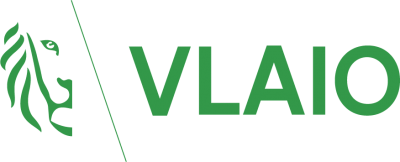Topics
We organise our actions in six thematic & strategic agendas:
Strategic Agendas:
Bio-economy
Circular Construction
Chemicals/Plastics
Manufacturing Industry
Food Chain
Water Cycles
Seven leverages provide additional support:
Leverage effects:
Lever Policy Instruments
Lever Circular Procurement
Lever Communication
Lever Innovation & Entrepreneurship
Lever Financing
Lever Jobs & Skills
Lever Research
What, why and how?
Why are we pursuing a circular economy?
Future visions 2050
How do we see our circular future?
About our management
Who steers what at Flanders Circular?
ICAL: Interdisciplinary Circular Architecture Laboratory
A new link in the value network to support the circular construction sector
In traditional architectural practice, there is little time and space to further expand the range of tasks to include research on circular construction.
With the Interdisciplinary Circular Architecture Laboratory (ICAL), TEKEN architecture wants to test a new collaborative process in which a team of experts provides support to architects and construction teams during the design process in applying circular building products and design principles.
The collaboration process will be shaped through a pilot project with the architecture firm Averechts. Those learning lessons form the blueprint for further collaborations with other architects and construction teams.
By joining forces with Labland's Platform for Circular Building Nodes - which documents circular building nodes during execution on site - we can offer insights into the full construction process of real, circular building projects.
The ultimate goal of this project is to create a living reference work with circular construction projects in practice from design to execution: real-life documentation of decision moments and execution phases with site photos, construction drawings, LCA analyses, cost estimates ... In this way, we aim to take circular construction out of the theoretical vacuum and shift the dialogue to project-specific practical applications.
TEKENarchitectuur
Partners VITO, WTCB, Democo en wooncoop
Sectors
Themes
Organisations
Website
MOST IMPORTANT
RESULTS
- We documented the collaboration and decision-making process during real construction projects with circular ambitions, capturing one case in detail. In doing so, we showed the importance of a cross-point figure between construction team and expert team.
- We have already drawn up diagrams and concepts of possible new chain collaborations within the construction sector based on practical experience.
- Within the supervised construction projects, we were able to identify a measurable improvement in environmental impact and reuse potential.
- We conducted a concrete cost-benefit analysis of the co-creation process, comparing the financial cost with the environmental benefits.
MOST IMPORTANT
LESSONS LEARNED
- To vitalise the collaborative process and research around circular construction and avoid watered-down discussions, we need to take the conversations out of theory, and organise them around concrete practical cases.
- It is possible to significantly reduce the environmental impact of a construction project, but it takes time and knowledge. In the pilot project, we found that a 50% improvement o.w. environmental impact costs around €20,000. This is a rough estimate, but gives an idea of the possibilities and challenges.
- There is little learning space in the field and building issues are becoming increasingly complex. Architectural offices are overloaded and other stakeholders also have little time to learn or adjust. To avoid clogging up the system, a new, more social and open revenue model seems indispensable.
- Extensive preparation of a project application pays off in the long run. It is important to take sufficient time to write out a project proposal. Time should also be made for reflection and adjustment throughout the process.
WHAT DOES
THE FUTURE HOLD?
We still want to work on the further development and expansion of an online, living reference work with circular practice projects from design to implementation. Possibly this will be a shared website with the Platform for Circular Building Nodes, possibly also in cooperation with the ICT service of Flanders Circular to optimally align both websites.
















